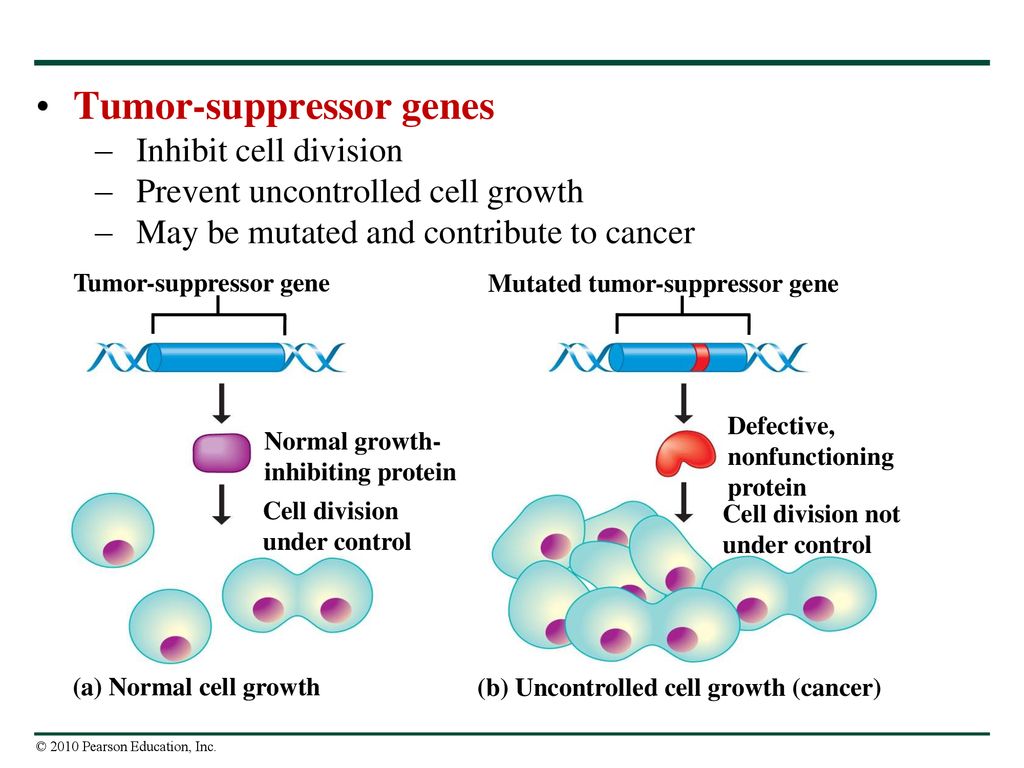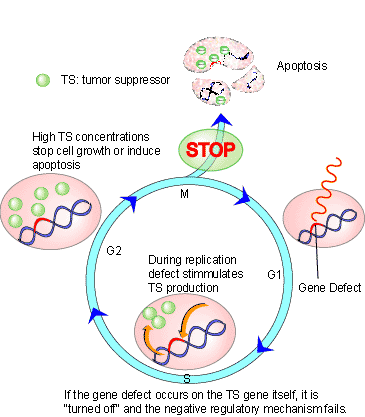How Genes Are Controlled Biology Diagrams Tumor suppressor genes encode proteins that normally inhibit tumor formation caused by abnormal cellular proliferation. Tumor suppressor proteins can participate in a variety of processes such as negative regulation of the cell cycle, positive regulation of apoptosis, regulation of DNA damage response, or other mechanisms (Stanbridge, 1990 In cancer, cells following new instructions begin to multiply uncontrollably, eventually creating cancerous tumors. Tumor suppressor genes help regulate a complicated cellular timetable, sometimes called the cell cycle. Tumor suppressor genes: Keep cells from dividing too fast and multiplying so quickly that they form tumors.

Checkpoints are depicted as thick red bars. The stages of the cell cycle (G1: Gap 1, S: DNA synthesis, G2: Gap 2, and M: mitosis) are indicated. Tumor suppressors act to maintain checkpoints Both, in balance, regulate the whole cell cycle activities. Proto-oncogenes prevent cells from undergoing apoptosis, on the other side, tumor suppressor genes force cells to undergo apoptosis, if damaged. Note that apoptosis is a programmed cell death process that is also necessary for healthy cell cycle activities.

Cell cycle control by tumor suppressors and oncogenes Biology Diagrams
Tumor suppressor genes are important genes that act within the genome to regulate several cellular functions. These genes can be broadly classified based on their role in cell growth/cell cycle progression, cell proliferation, DNA repair mechanisms, and other crucial cellular signaling functions such as the apoptosis induction. Without functional tumor suppressor genes, there is a high risk of The cell cycle.Many tumor suppressors work to regulate the cycle at specific checkpoints in order to prevent damaged cells from replicating. A tumor suppressor gene (TSG), or anti-oncogene, is a gene that regulates a cell during cell division and replication. [1] If the cell grows uncontrollably, it will result in cancer.When a tumor suppressor gene is mutated, it results in a loss or

The products of the Rb and INK4 tumor suppressor genes regulate cell cycle progression at the same point as that affected by cyclin D1 (Figure 15.38). Rb inhibits passage through the restriction point in G 1 by repressing transcription of a number of genes involved in cell cycle progression and DNA synthesis (see Figure 14.20). In normal cells

Oncogenes, Tumor Suppressor Genes, and DNA Repair Genes Biology Diagrams
In contrast to the cellular proliferation-stimulating function of proto-oncogenes and oncogenes that drive the cell cycle forward, tumor suppressor genes code for proteins that normally operate to
